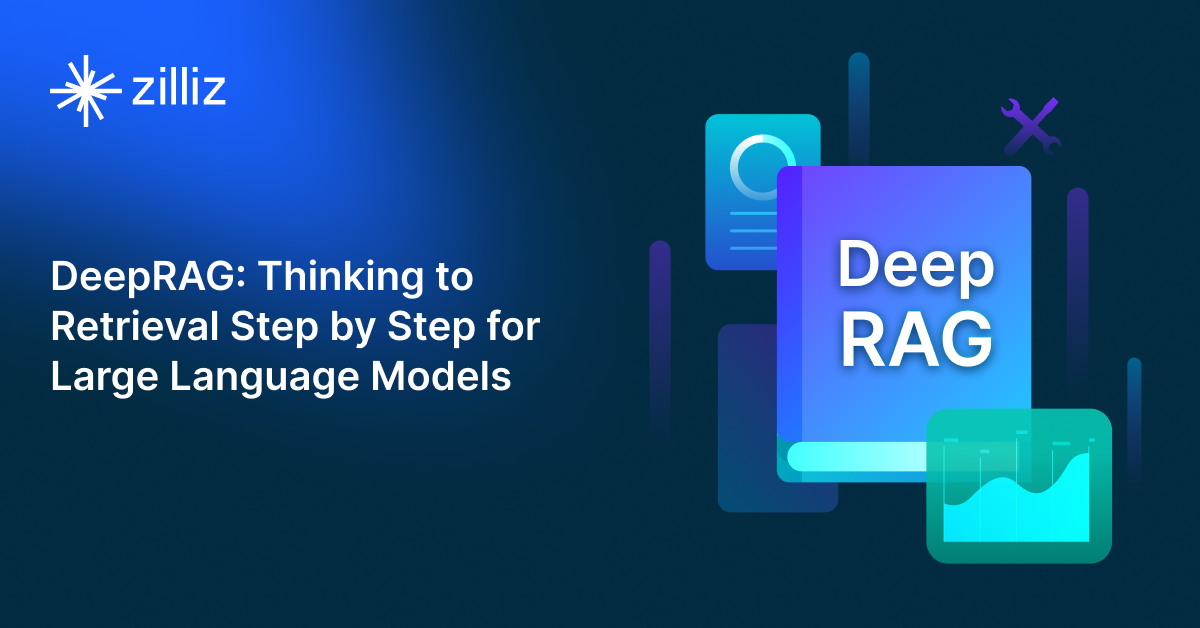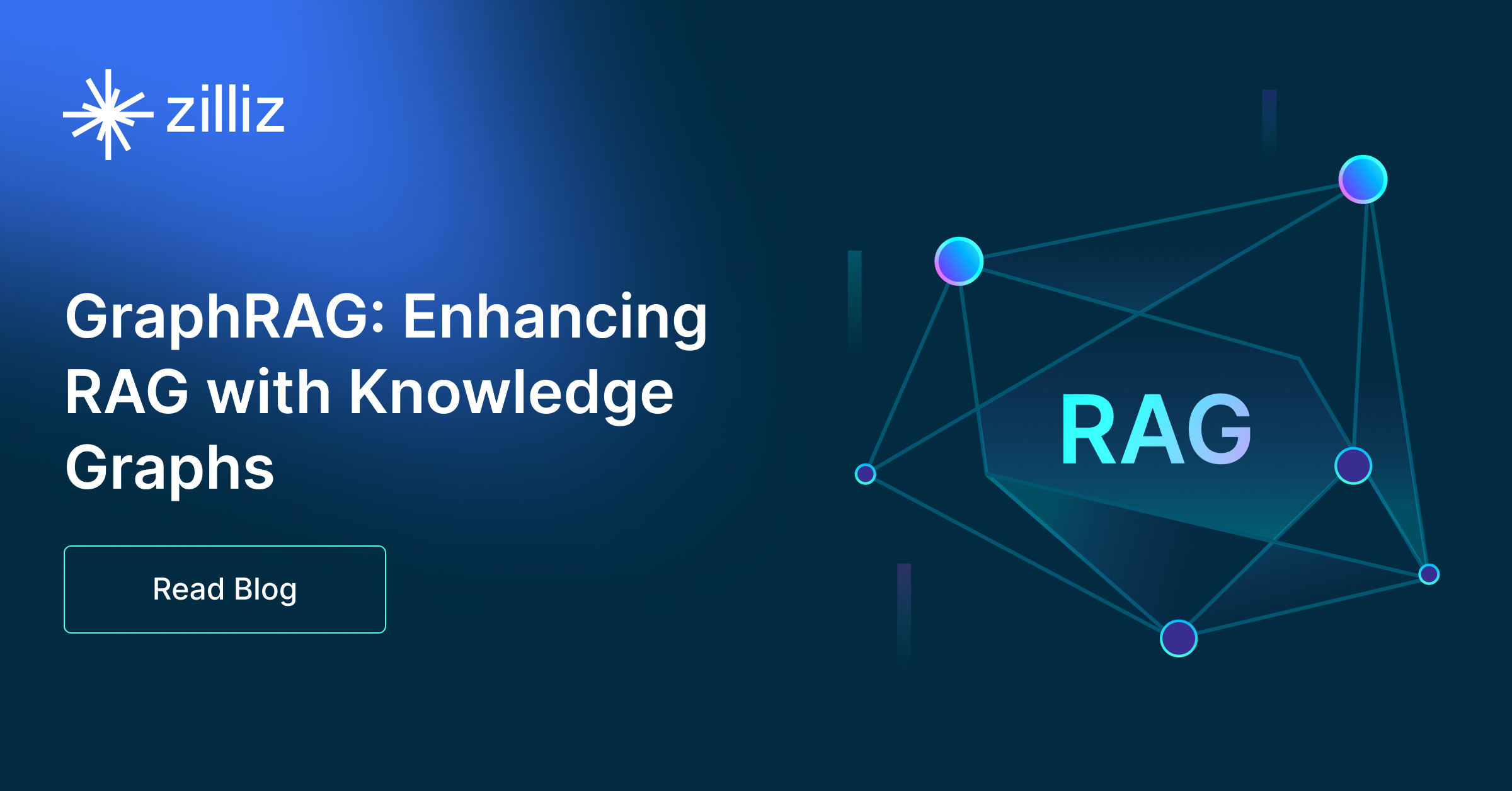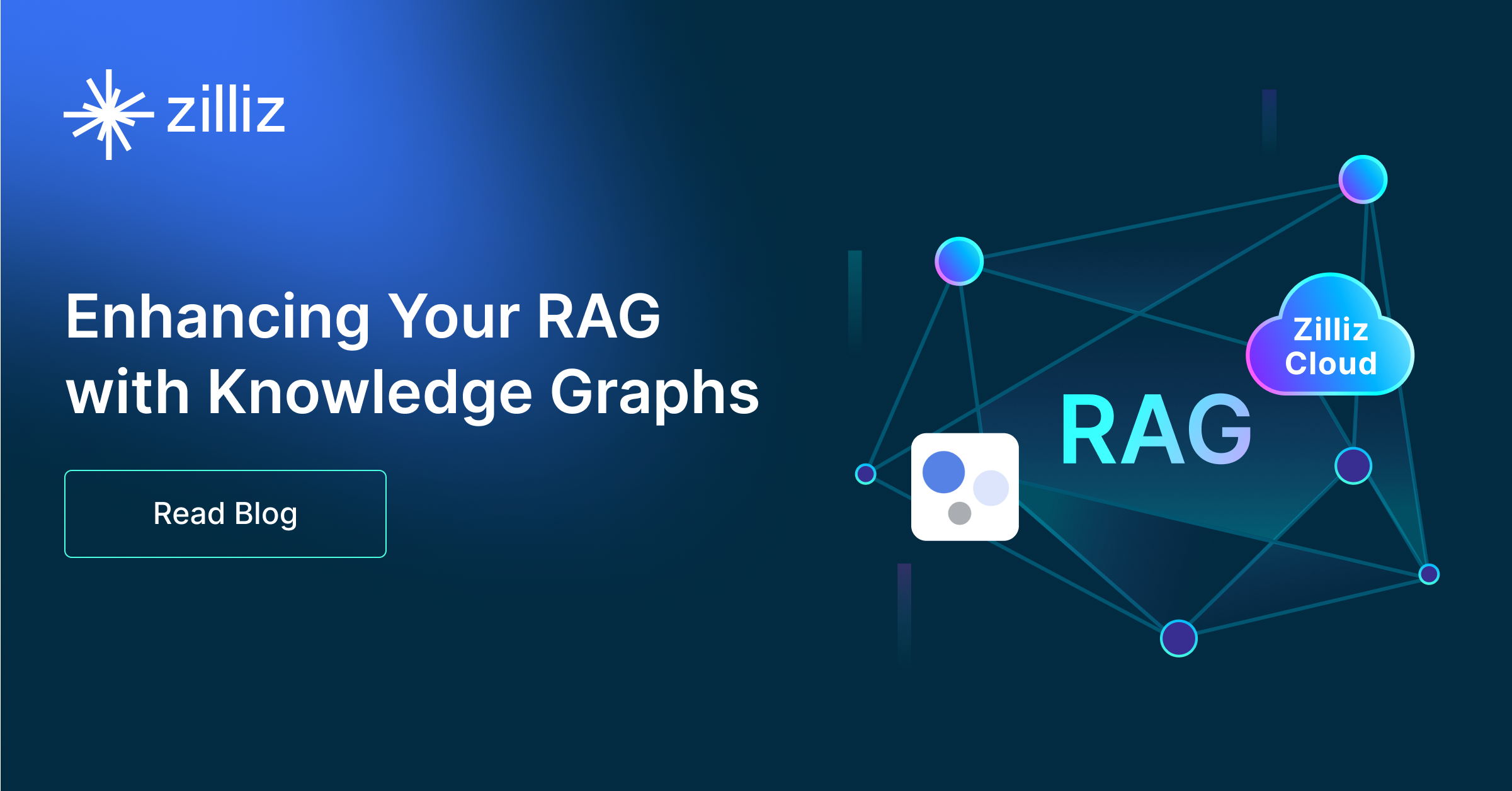Build RAG Chatbot with Haystack, Milvus, OpenAI GPT-4o, and Ollama bge-m3
Introduction to RAG
Retrieval-Augmented Generation (RAG) is a game-changer for GenAI applications, especially in conversational AI. It combines the power of pre-trained large language models (LLMs) like OpenAI’s GPT with external knowledge sources stored in vector databases such as Milvus and Zilliz Cloud, allowing for more accurate, contextually relevant, and up-to-date response generation. A RAG pipeline usually consists of four basic components: a vector database, an embedding model, an LLM, and a framework.
Key Components We'll Use for This RAG Chatbot
This tutorial shows you how to build a simple RAG chatbot in Python using the following components:
- Haystack: An open-source Python framework designed for building production-ready NLP applications, particularly question answering and semantic search systems. Haystack excels at retrieving information from large document collections through its modular architecture that combines retrieval and reader components. Ideal for developers creating search applications, chatbots, and knowledge management systems that require efficient document processing and accurate information extraction from unstructured text.
- Milvus: An open-source vector database optimized to store, index, and search large-scale vector embeddings efficiently, perfect for use cases like RAG, semantic search, and recommender systems. If you hate to manage your own infrastructure, we recommend using Zilliz Cloud, which is a fully managed vector database service built on Milvus and offers a free tier supporting up to 1 million vectors.
- OpenAI GPT-4o: A multimodal AI model optimized for advanced natural language processing, image understanding, and audio analysis. It excels in real-time interactions, offering high accuracy, contextual awareness, and seamless integration across diverse inputs. Ideal for dynamic applications like interactive customer support, content generation, multilingual translation, and complex data synthesis in industries requiring rapid, adaptive AI solutions.
- Ollama BGE-M3: A multilingual embedding model optimized for semantic understanding, retrieval, and clustering. Strengths include high accuracy across 100+ languages, robust performance in dense retrieval tasks, and scalability. Ideal for enterprise search systems, cross-lingual applications, and AI-driven knowledge management requiring precise semantic analysis.
By the end of this tutorial, you’ll have a functional chatbot capable of answering questions based on a custom knowledge base.
Note: Since we may use proprietary models in our tutorials, make sure you have the required API key beforehand.
Step 1: Install and Set Up Haystack
import os
import requests
from haystack import Pipeline
from haystack.components.converters import MarkdownToDocument
from haystack.components.preprocessors import DocumentSplitter
from haystack.components.writers import DocumentWriter
Step 2: Install and Set Up OpenAI GPT-4o
To use OpenAI models, you need to get an OpenAI API key. The Haystack integration with OpenAI models uses an OPENAI_API_KEY environment variable by default. Otherwise, you can pass an API key at initialization with api_key:
generator = OpenAIGenerator(api_key=Secret.from_token("<your-api-key>"), model="gpt-4o-mini")
Then, the generator component needs a prompt to operate, but you can pass any text generation parameters valid for the openai.ChatCompletion.create method directly to this component using the generation_kwargs parameter, both at initialization and to run() method. For more details on the parameters supported by the OpenAI API, refer to the OpenAI documentation.
Now let's install and set up OpenAI models.
from haystack.components.generators import OpenAIGenerator
generator = OpenAIGenerator(model="gpt-4o", api_key=Secret.from_token("<your-api-key>"))
Step 3: Install and Set Up Ollama bge-m3
pip install ollama-haystack
Make sure that you have a running Ollama model (either through a docker container, or locally hosted). No other configuration is necessary as Ollama has the embedding API built in.
from haystack import Document
from haystack_integrations.components.embedders.ollama import OllamaDocumentEmbedder
from haystack_integrations.components.embedders.ollama import OllamaTextEmbedder
text_embedder = OllamaTextEmbedder(model="bge-m3")
document_embedder = OllamaDocumentEmbedder(model="bge-m3")
Step 4: Install and Set Up Milvus
pip install --upgrade pymilvus milvus-haystack
from milvus_haystack import MilvusDocumentStore
from milvus_haystack.milvus_embedding_retriever import MilvusEmbeddingRetriever
document_store = MilvusDocumentStore(connection_args={"uri": "./milvus.db"}, drop_old=True,)
retriever = MilvusEmbeddingRetriever(document_store=document_store, top_k=3)
Step 5: Build a RAG Chatbot
Now that you’ve set up all components, let’s start to build a simple chatbot. We’ll use the Milvus introduction doc as a private knowledge base. You can replace it your own dataset to customize your RAG chatbot.
url = 'https://raw.githubusercontent.com/milvus-io/milvus-docs/refs/heads/v2.5.x/site/en/about/overview.md'
example_file = 'example_file.md'
response = requests.get(url)
with open(example_file, 'wb') as f:
f.write(response.content)
file_paths = [example_file] # You can replace it with your own file paths.
indexing_pipeline = Pipeline()
indexing_pipeline.add_component("converter", MarkdownToDocument())
indexing_pipeline.add_component("splitter", DocumentSplitter(split_by="sentence", split_length=2))
indexing_pipeline.add_component("embedder", document_embedder)
indexing_pipeline.add_component("writer", DocumentWriter(document_store))
indexing_pipeline.connect("converter", "splitter")
indexing_pipeline.connect("splitter", "embedder")
indexing_pipeline.connect("embedder", "writer")
indexing_pipeline.run({"converter": {"sources": file_paths}})
# print("Number of documents:", document_store.count_documents())
question = "What is Milvus?" # You can replace it with your own question.
retrieval_pipeline = Pipeline()
retrieval_pipeline.add_component("embedder", text_embedder)
retrieval_pipeline.add_component("retriever", retriever)
retrieval_pipeline.connect("embedder", "retriever")
retrieval_results = retrieval_pipeline.run({"embedder": {"text": question}})
# for doc in retrieval_results["retriever"]["documents"]:
# print(doc.content)
# print("-" * 10)
from haystack.utils import Secret
from haystack.components.builders import PromptBuilder
retriever = MilvusEmbeddingRetriever(document_store=document_store, top_k=3)
text_embedder = OllamaTextEmbedder(model="bge-m3")
prompt_template = """Answer the following query based on the provided context. If the context does
not include an answer, reply with 'I don't know'.\n
Query: {{query}}
Documents:
{% for doc in documents %}
{{ doc.content }}
{% endfor %}
Answer:
"""
rag_pipeline = Pipeline()
rag_pipeline.add_component("text_embedder", text_embedder)
rag_pipeline.add_component("retriever", retriever)
rag_pipeline.add_component("prompt_builder", PromptBuilder(template=prompt_template))
rag_pipeline.add_component("generator", generator)
rag_pipeline.connect("text_embedder.embedding", "retriever.query_embedding")
rag_pipeline.connect("retriever.documents", "prompt_builder.documents")
rag_pipeline.connect("prompt_builder", "generator")
results = rag_pipeline.run({"text_embedder": {"text": question}, "prompt_builder": {"query": question},})
print('RAG answer:\n', results["generator"]["replies"][0])
Optimization Tips
As you build your RAG system, optimization is key to ensuring peak performance and efficiency. While setting up the components is an essential first step, fine-tuning each one will help you create a solution that works even better and scales seamlessly. In this section, we’ll share some practical tips for optimizing all these components, giving you the edge to build smarter, faster, and more responsive RAG applications.
Haystack optimization tips
To optimize Haystack in a RAG setup, ensure you use an efficient retriever like FAISS or Milvus for scalable and fast similarity searches. Fine-tune your document store settings, such as indexing strategies and storage backends, to balance speed and accuracy. Use batch processing for embedding generation to reduce latency and optimize API calls. Leverage Haystack's pipeline caching to avoid redundant computations, especially for frequently queried documents. Tune your reader model by selecting a lightweight yet accurate transformer-based model like DistilBERT to speed up response times. Implement query rewriting or filtering techniques to enhance retrieval quality, ensuring the most relevant documents are retrieved for generation. Finally, monitor system performance with Haystack’s built-in evaluation tools to iteratively refine your setup based on real-world query performance.
Milvus optimization tips
Milvus serves as a highly efficient vector database, critical for retrieval tasks in a RAG system. To optimize its performance, ensure that indexes are properly built to balance speed and accuracy; consider utilizing HNSW (Hierarchical Navigable Small World) for efficient nearest neighbor search where response time is crucial. Partitioning data based on usage patterns can enhance query performance and reduce load times, enabling better scalability. Regularly monitor and adjust cache settings based on query frequency to avoid latency during data retrieval. Employ batch processing for vector insertions, which can minimize database lock contention and enhance overall throughput. Additionally, fine-tune the model parameters by experimenting with the dimensionality of the vectors; higher dimensions can improve retrieval accuracy but may increase search time, necessitating a balance tailored to your specific use case and hardware infrastructure.
OpenAI GPT-4o optimization tips
To optimize OpenAI GPT-4o in a RAG setup, structure inputs with concise, context-rich prompts and preprocess retrieved documents to remove noise. Use metadata filtering to prioritize relevant sources and limit context length to avoid token waste. Fine-tune retrieval models to align with GPT-4o’s strengths, employ chunking with overlap for continuity, and experiment with temperature and max_token settings for balanced creativity and focus. Cache frequent queries and implement rate limiting to manage costs. Regularly evaluate outputs to refine retrieval and generation alignment.
Ollama bge-m3 optimization tips
To optimize Ollama bge-m3 in a RAG setup, ensure input text is preprocessed (lowercasing, removing noise) and split into semantically coherent chunks (300-500 tokens) to balance retrieval accuracy and computational load. Use dynamic pooling to prioritize key phrases in embeddings. Fine-tune the model on domain-specific data with contrastive learning to enhance relevance. Adjust temperature and top-k sampling for controlled generation. Leverage batch inference for parallel processing and enable hardware acceleration (e.g., CUDA) for faster embeddings. Regularly validate retrieval performance with benchmark datasets to refine thresholds and ranking strategies.
By implementing these tips across your components, you'll be able to enhance the performance and functionality of your RAG system, ensuring it’s optimized for both speed and accuracy. Keep testing, iterating, and refining your setup to stay ahead in the ever-evolving world of AI development.
RAG Cost Calculator: A Free Tool to Calculate Your Cost in Seconds
Estimating the cost of a Retrieval-Augmented Generation (RAG) pipeline involves analyzing expenses across vector storage, compute resources, and API usage. Key cost drivers include vector database queries, embedding generation, and LLM inference.
RAG Cost Calculator is a free tool that quickly estimates the cost of building a RAG pipeline, including chunking, embedding, vector storage/search, and LLM generation. It also helps you identify cost-saving opportunities and achieve up to 10x cost reduction on vector databases with the serverless option.
 Calculate your RAG cost
Calculate your RAG cost
What Have You Learned?
By diving into this tutorial, you’ve unlocked the power of integrating cutting-edge tools to build a fully functional RAG system from scratch! You learned how Haystack acts as the backbone framework, streamlining the orchestration of your pipeline and making complex workflows feel intuitive. Milvus, your vector database superhero, stepped in to handle lightning-fast similarity searches, ensuring your system retrieves the most relevant chunks of data in milliseconds. Then came OpenAI’s GPT-4o, the conversational genius that transforms those retrieved snippets into coherent, context-aware responses—like having a creative collaborator who never runs out of ideas. And let’s not forget Ollama’s bge-m3, the embedding model that turned your raw text into rich, meaningful vectors, bridging the gap between human language and machine understanding. Together, these tools created a seamless RAG pipeline that’s both powerful and adaptable, ready to tackle everything from customer support bots to research assistants.
But wait—there’s more! You also picked up pro tips for optimizing performance, like tweaking chunk sizes and balancing speed with accuracy, plus a sneak peek into using a free RAG cost calculator to keep your projects budget-friendly. Now that you’ve seen how these pieces fit together, the real magic begins. Imagine the applications you could build, the problems you could solve, or the workflows you could revolutionize. This isn’t just about following steps; it’s about sparking innovation. So grab your tools, experiment fearlessly, and start building. The future of intelligent applications is yours to shape, one RAG-powered idea at a time. Let’s go make something amazing! 🚀
Further Resources
🌟 In addition to this RAG tutorial, unleash your full potential with these incredible resources to level up your RAG skills.
- How to Build a Multimodal RAG | Documentation
- How to Enhance the Performance of Your RAG Pipeline
- Graph RAG with Milvus | Documentation
- How to Evaluate RAG Applications - Zilliz Learn
- Generative AI Resource Hub | Zilliz
We'd Love to Hear What You Think!
We’d love to hear your thoughts! 🌟 Leave your questions or comments below or join our vibrant Milvus Discord community to share your experiences, ask questions, or connect with thousands of AI enthusiasts. Your journey matters to us!
If you like this tutorial, show your support by giving our Milvus GitHub repo a star ⭐—it means the world to us and inspires us to keep creating! 💖
- Introduction to RAG
- Key Components We'll Use for This RAG Chatbot
- Step 1: Install and Set Up Haystack
- Step 2: Install and Set Up OpenAI GPT-4o
- Step 3: Install and Set Up Ollama bge-m3
- Step 4: Install and Set Up Milvus
- Step 5: Build a RAG Chatbot
- Optimization Tips
- RAG Cost Calculator: A Free Tool to Calculate Your Cost in Seconds
- What Have You Learned?
- Further Resources
- We'd Love to Hear What You Think!
Content
Vector Database at Scale
Zilliz Cloud is a fully-managed vector database built for scale, perfect for your RAG apps.
Try Zilliz Cloud for Free


